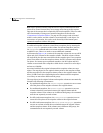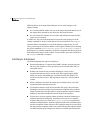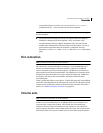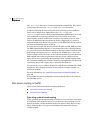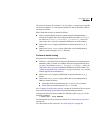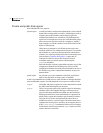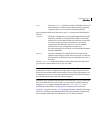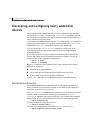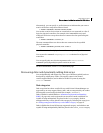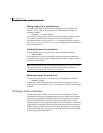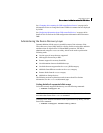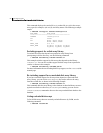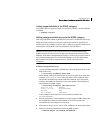
80 Administering disks
Disk devices
Private and public disk regions
Most VM disks have two regions:
private region A small area where configuration information is stored. A disk
header label, configuration records for VxVM objects (such as
volumes, plexes and subdisks), and an intent log for the
configuration database are stored here. The default private
region size is 32 megabytes (except for VxVM boot disk groups
where the private region size must be 1 megabyte), which is
large enough to record the details of several thousand VxVM
objects in a disk group.
Under most circumstances, the default private region size
should be sufficient. For administrative purposes, it is usually
much simpler to create more disk groups that contain fewer
volumes, or to split large disk groups into several smaller ones
(as described in “Splitting disk groups” on page 205). If
required, the value for the private region size may be
overridden when you add or replace a disk using the
vxdiskadm command.
Each disk that has a private region holds an entire copy of the
configuration database for the disk group. The size of the
configuration database for a disk group is limited by the size of
the smallest copy of the configuration database on any of its
member disks.
public region An area that covers the remainder of the disk, and which is
used for the allocation of storage space to subdisks.
A disk’s type identifies how VxVM accesses a disk, and how it manages the disk’s
private and public regions. The following disk access types are used by VxVM:
simple The public and private regions are on the same disk area (with
the public area following the private area).
nopriv There is no private region (only a public region for allocating
subdisks). This is the simplest disk type consisting only of
space for allocating subdisks. Such disks are most useful for
defining special devices (such as RAM disks, if supported) on
which private region data would not persist between reboots.
They can also be used to encapsulate disks where there is
insufficient room for a private region. The disks cannot store
configuration and log copies, and they do not support the use
of the
vxdisk addregion command to define reserved regions.
VxVM cannot track the movement of nopriv disks on a SCSI
chain or between controllers.



